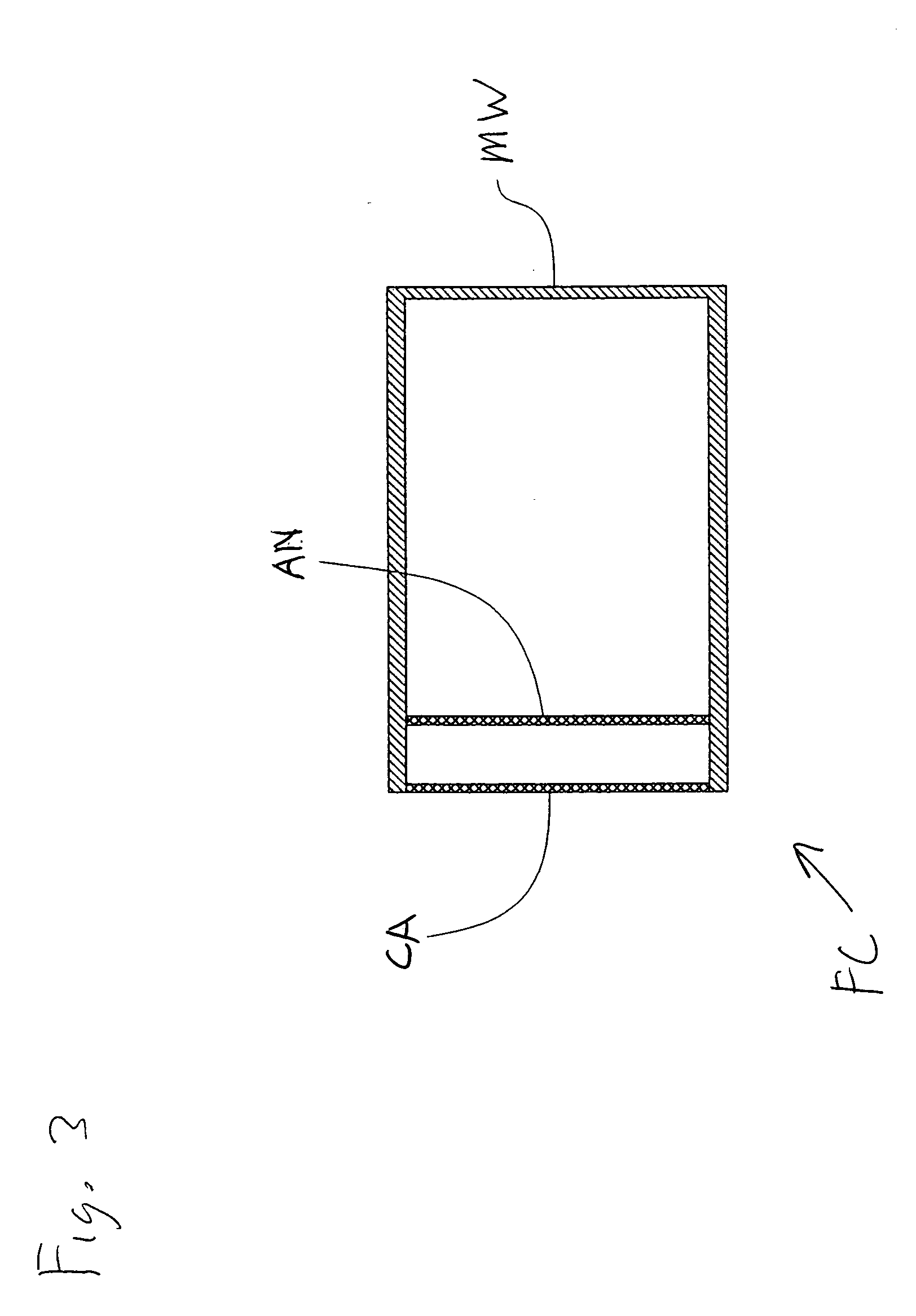Hydride-based fuel cell designed for the elimination of hydrogen formed therein
a fuel cell and hydrogen-based technology, applied in the direction of fuel cells, fuel cell auxilaries, electrical devices, etc., can solve the problems of hydride-based fuel, unfavorable gas (hydrogen) evolution, storage and transportation, etc., and achieve the effect of enhancing the stability toward chemicals
- Summary
- Abstract
- Description
- Claims
- Application Information
AI Technical Summary
Benefits of technology
Problems solved by technology
Method used
Image
Examples
example 1
Procedure for Coating a PTFE Membrane with a Hydrophobic Material
[0121] The membrane to be coated is first cleaned by dipping it into ethanol and thereafter into acetone, each for a few seconds. The membrane is then left to dry in air for at least about 20 minutes, whereafter it is transferred into a vacuum oven and dried for about 30 minutes at about 70° C. The thus cleaned and dried membrane is dipped into a solution of the coating material (e.g., FluoroPel® PFC 601A, a 1% fluoropolymer solution in 3M HFE 7100 fluorosolvent (b.p. 61° C.)) for about 10-15 seconds. The thus coated membrane is left to dry in air for about 30 minutes and then vacuum-dried at 90° C. for about 2 hours.
example 2
Procedure for Coating a Membrane with an Oxide Surface with a Hydrophobic Material
[0122] The membrane with an oxide surface (e.g., comprising glass, metal etc.) is treated in the same manner as described in Example 1, but using FluoroSyl® FSM660 (a fluoroalkyl monosilane in a high boiling fluorinated surface providing low surface energy to oxide surfaces and a good adhesion for fluoropolymers) instead of FluoroPel® PFC 601A.
example 3
[0123] Membranes of Activated Carbon and PTFE
ActivatedMembraneCarbonPTFEThicknessNo.(wt.-%)(wt.-%)(μm)185154502851522037030400470302705505040065050200
[0124] The above membranes are made by subjecting powders of activated carbon (Pica Ltd., USA) and PTFE to high-speed milling and rolling the resultant dough or paste to the desired thickness. By compressing the membranes, a dense material with nm sized pores may be produced.
[0125] Membranes similar to the above membranes but having a thickness of 200 μm and 100 μm, respectively, are included in a bi-layer configuration by combining them with a PTFE membrane (100% PTFE, thickness 100 μm), to form bi-layer membranes having total thicknesses of 300 μm and 200 μm, respectively.
[0126] By way of one non-limiting example, FIG. 1 shows a fuel cell FC for use with a hydride-based fuel. The fuel cell FC is designed for being sealed in a liquid-tight manner when in operation. The fuel cell FC may include one or more openings, e.g., two openi...
PUM
| Property | Measurement | Unit |
|---|---|---|
| diameters | aaaaa | aaaaa |
| thickness | aaaaa | aaaaa |
| thickness | aaaaa | aaaaa |
Abstract
Description
Claims
Application Information
 Login to View More
Login to View More - R&D
- Intellectual Property
- Life Sciences
- Materials
- Tech Scout
- Unparalleled Data Quality
- Higher Quality Content
- 60% Fewer Hallucinations
Browse by: Latest US Patents, China's latest patents, Technical Efficacy Thesaurus, Application Domain, Technology Topic, Popular Technical Reports.
© 2025 PatSnap. All rights reserved.Legal|Privacy policy|Modern Slavery Act Transparency Statement|Sitemap|About US| Contact US: help@patsnap.com



